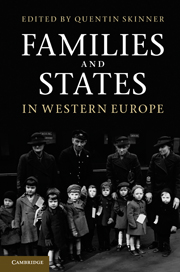7 - The Netherlands
Published online by Cambridge University Press: 05 June 2012
Summary
One of the key features of Dutch society before and for two decades after the Second World War was its division into zuilen, religious or ideological groupings or ‘pillars’, a phenomenon known in Dutch as verzuiling, translated variously as ‘socio-political compartmentalisation’ or, more literally, ‘pillarisation’. What did pillarisation actually involve? Dutch society was sharply divided along religious and political lines, splitting the population into four ‘pillars’: Roman Catholics, Protestants, Socialists and Liberals. Each of these groups lived in a world that was largely separate from the others. What did those worlds consist of?
To begin with, they consisted of religious denominations and political parties. People belonging to the Catholic grouping virtually all voted for the Catholic People's Party. The Protestants voted for Protestant parties. The two non-denominational groups, the Socialists and the Liberals, also had their own political representatives and parties. But the phenomenon of ‘pillarisation’ went much further than religious or political affiliation. The trade union movement, for example, was also divided into Catholic, Protestant and general (Socialist) unions, and the same applied to organisations of employers and farmers. The press and other media, including radio and later television, were also divided largely along socio-political and religious lines. The education system was – and in a certain sense still is – a textbook example of compartmentalisation. It was not only primary schools that were strictly divided into religious and other ideological categories, but so were secondary schools and even tertiary educational institutions.
- Type
- Chapter
- Information
- Families and States in Western Europe , pp. 129 - 145Publisher: Cambridge University PressPrint publication year: 2011
- 1
- Cited by

